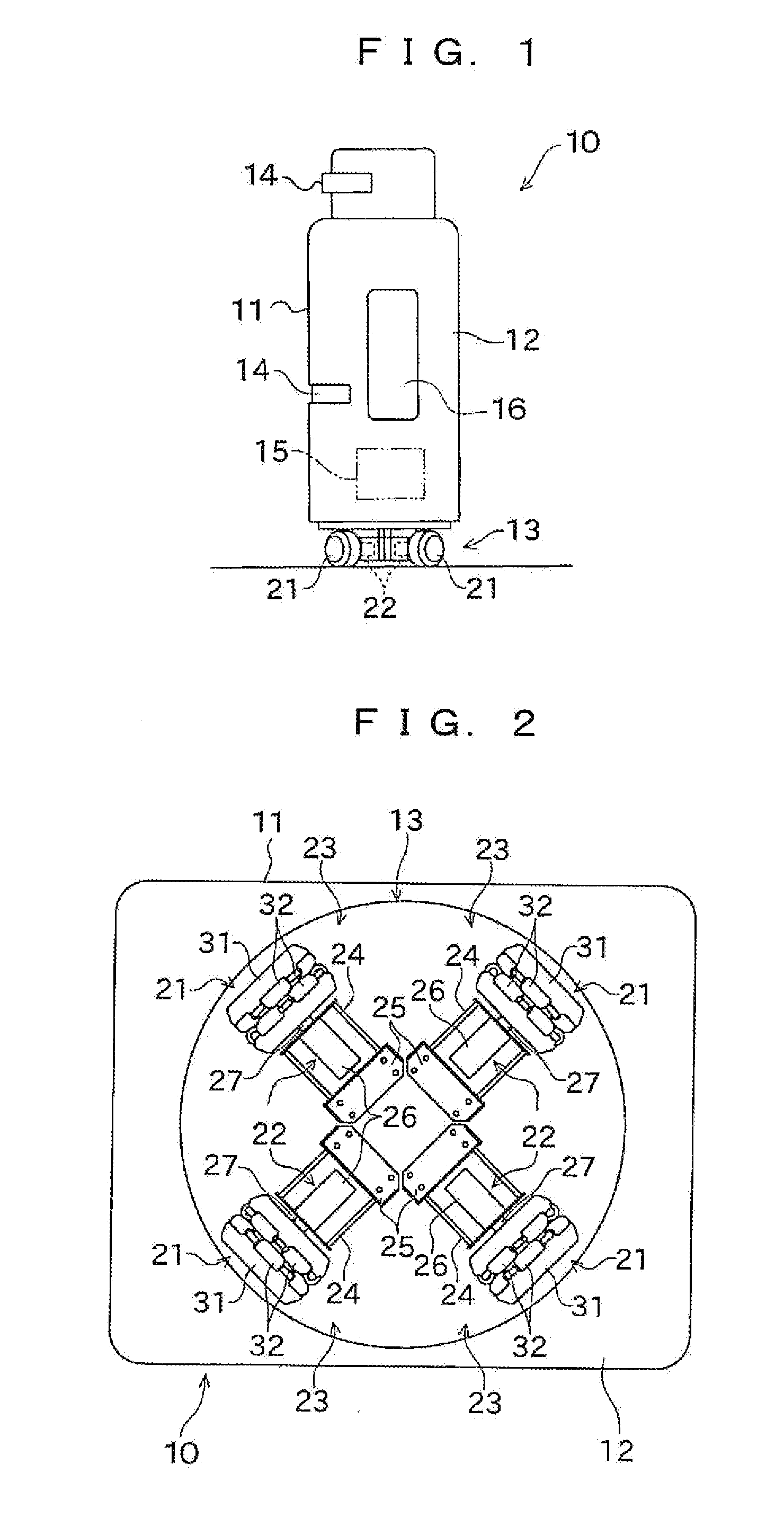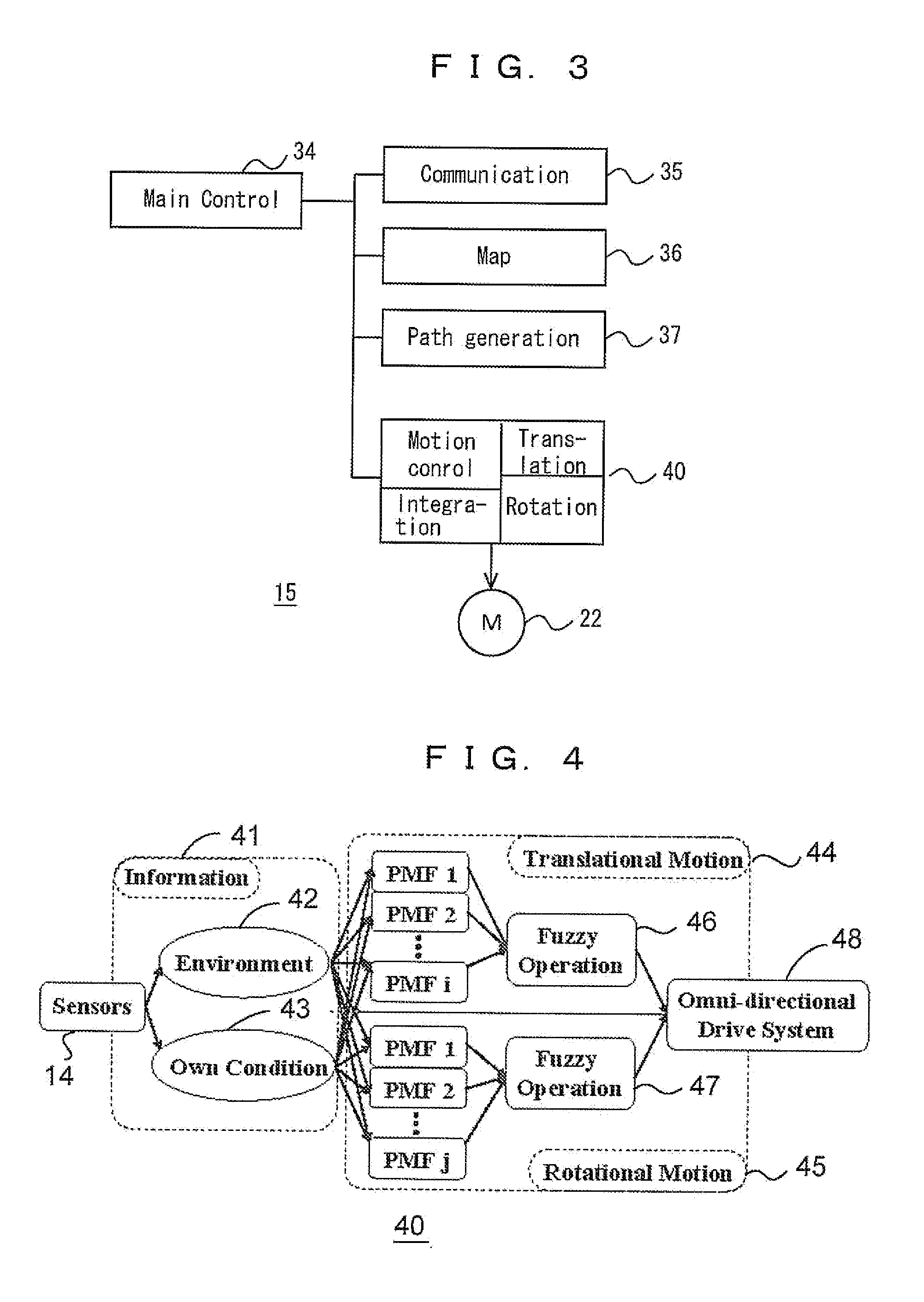Autonomous mobile body and control method of same
a mobile body and control method technology, applied in the direction of process and machine control, distance measurement, instruments, etc., can solve the problem that the orientation of the mobile body has not been considered, and achieve the effect of avoiding obstacles carefully, facilitating the combination of potential membership functions and facilitating the generation of respective amounts of control
- Summary
- Abstract
- Description
- Claims
- Application Information
AI Technical Summary
Benefits of technology
Problems solved by technology
Method used
Image
Examples
embodiment
[0047]FIGS. 1 to 22 show an autonomous mobile robot 10 and control thereof according to an embodiment. Referring to FIG. 1, the robot 10 includes a platform vehicle 13 provided with an omni-directional movement mechanism, with the platform vehicle 13 supporting an upper part 12 serving as an upper body. The upper part 12 is provided with a pair of, for example, laser range finders 14, each of which is attached at a different height. A stereoscopic device such as a stereo camera, light sources and cameras for space coding, or the like may be provided instead of the laser range finders 14. With the above configuration, the robot 10 acquires, at a number of heights, information indicating the distance between the robot and obstacles for each of predetermined directional angles, and outputs the distance information. The robot 10 may recognize its current position and orientation by being equipped with GPS or the like (not shown), or may alternatively recognize its current position and o...
PUM
 Login to View More
Login to View More Abstract
Description
Claims
Application Information
 Login to View More
Login to View More - R&D
- Intellectual Property
- Life Sciences
- Materials
- Tech Scout
- Unparalleled Data Quality
- Higher Quality Content
- 60% Fewer Hallucinations
Browse by: Latest US Patents, China's latest patents, Technical Efficacy Thesaurus, Application Domain, Technology Topic, Popular Technical Reports.
© 2025 PatSnap. All rights reserved.Legal|Privacy policy|Modern Slavery Act Transparency Statement|Sitemap|About US| Contact US: help@patsnap.com



